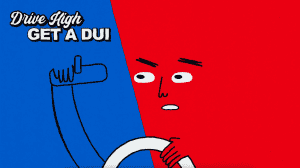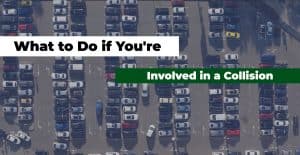The Federal Highway Administration estimates that on average a typical driver will travel about 14,000 miles annually, with a 1% chance of getting pulled over by law enforcement. Even if you are an extremely well-trained and aware driver and the chances of you being stopped are statistically low, everyone needs to know proper protocol when and if you are pulled over by authorities. To help make interactions with law enforcement smooth, efficient, and civil, we will walk you through each step to take if you are in this situation.
1. Find a Safe Place to Pull Over
Safety first. It is not uncommon to feel nervous when you see red and blue lights flashing in your rearview mirror. Don’t panic, take a deep breath, assess your area, check your mirrors, and determine where there is a safe spot to pull over. If you are in heavy traffic, or at a busy intersection, it is acceptable to drive a short distance to a safe location, such as a side street, wide shoulder, or close parking lot. This way, an officer can safely approach your vehicle without dangerous proximity to oncoming traffic.
2. Use Your Turn Signal/Flashers and SLOW DOWN
To communicate to both the officer and other drivers on the road, use your turn signals and flashers to signify your intent to pull over. If you are in a tricky spot or need to cross multiple lanes of traffic to pull over, it’s important to engage your flashers first, and then move with caution so other drivers are aware why you’re slowing down and can adjust accordingly.
3. Put Your Vehicle in Park and Turn Off the Ignition
Once you have found a safe place to park, turn your car off, and stay seated. Do not get out of the vehicle. These actions show the officer that you understand the protocol and that you’re not planning to drive nor run away.
4. Roll Down Your Driver’s Side Window, and Put Your Hands on the Wheel
Roll down your driver’s side window, as well as any windows that are tinted. If it is dark outside, turn on interior lights. Make these movements slow and deliberate, and do not fumble around looking for documents at this time. Place your hands on the wheel before the officer approaches. Remember, officers can be equally nervous, so taking these actions will display transparency, which can help ease the stress of the situation.
5. Stay Calm, Wait for Instructions From The Officer
Take a deep breath, and listen to the officer when they approach your window. He or she will ask for your license, registration, and proof of insurance (which is mandatory in the State of Colorado). If your documents are stored in the glove compartment or center console, politely ask permission from the officer to collect them. Again, be slow and deliberate, so the officer does not suspect anything threatening. Respond to the officer’s questions the best you can, but remember you do not have to, you do have the right to remain silent. Once the officer has your documents and leaves to verify your information, place your hands back on the steering wheel. Be patient.
Tip: Utilize the “myColorado” app where you can upload all your important documents, and have them digitally centralized, easily accessible, and presentable, for scenarios like these.
6. Be Polite and Respectful.
If the officer returns to give you a ticket, do not argue. Be civil. If you feel that you were unfairly charged, you do have the right to dispute the ticket, and address any discrepancies, but only in court. Arguing with the officer at this time, will not help dismiss the ticket. Remember, anything you say to the officer is admissible in court.
7. Sign the Citation (if applicable)
Sometimes drivers can be sent on their way with a warning, but if you are issued a citation, you will need to sign it. Signing it is not an admission of guilt; it is to verify that you are the right person receiving it, and that you agree to either pay the fine, or show up in court to contest it. The citation will have instructions on how to pay the fine, or the date that you are scheduled to appear in court, if you choose to dispute it.
Closing Information:
You can always ask for proper identification from the police officer to confirm his or her identity. Typically, the officer will hand you a business card. If you are issued a citation you can also confirm their information on the ticket.
**If at any point you feel uncomfortable in your interaction, or an officer refuses to confirm their identity, you can call 911.**
___
Many of us will have been pulled over at least once in our lives, and generally speaking, no one likes getting in trouble with the law. To avoid these scenarios, stay apprised of traffic laws in your state, and be a responsible driver. Even when we are good and experienced driver, we all make mistakes. It’s always better to know what to do when you’re pulled over so you don’t escalate a routine situation.










